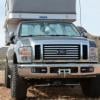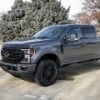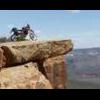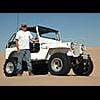Posted 27 February 2011 - 01:25 AM
Careful on the use of non-marine sealed electrical components on a boat.
You do not want corrosion getting into your contacts, but more importantly you do not want sparking at your relay contacts causing gas fumes to ignite. I am not sure the 1314 is explosion proof packaged, I cannot tell from the pictures I have and did not get a good look the other day at mine, but I did not see any statement in the specs I have claiming it is approved for marine usage. Just double check.
2016 F-150 FX4 XLT SCab | Ingot Silver | 6.5' | 3.5EB | 3.55 w/rear locker | Tow | IBC | 7050# GVWR | 1945# Payload | 36Gal | BFG A/T KO2 LT275/70R18E | Timbrens
2022 FWC Hawk Silver Spur | Front Dinette | Cassette Toilet | Cooktop | Hot Water | Outside shower | CR850 fridge | 160W rooftop solar panel | 15A MPPT controller | Dual 90AH AGM batteries | Yakima Rack | 2 Maxxair fans | Furnace | Fiama side awning | Mechanical Jacks

















